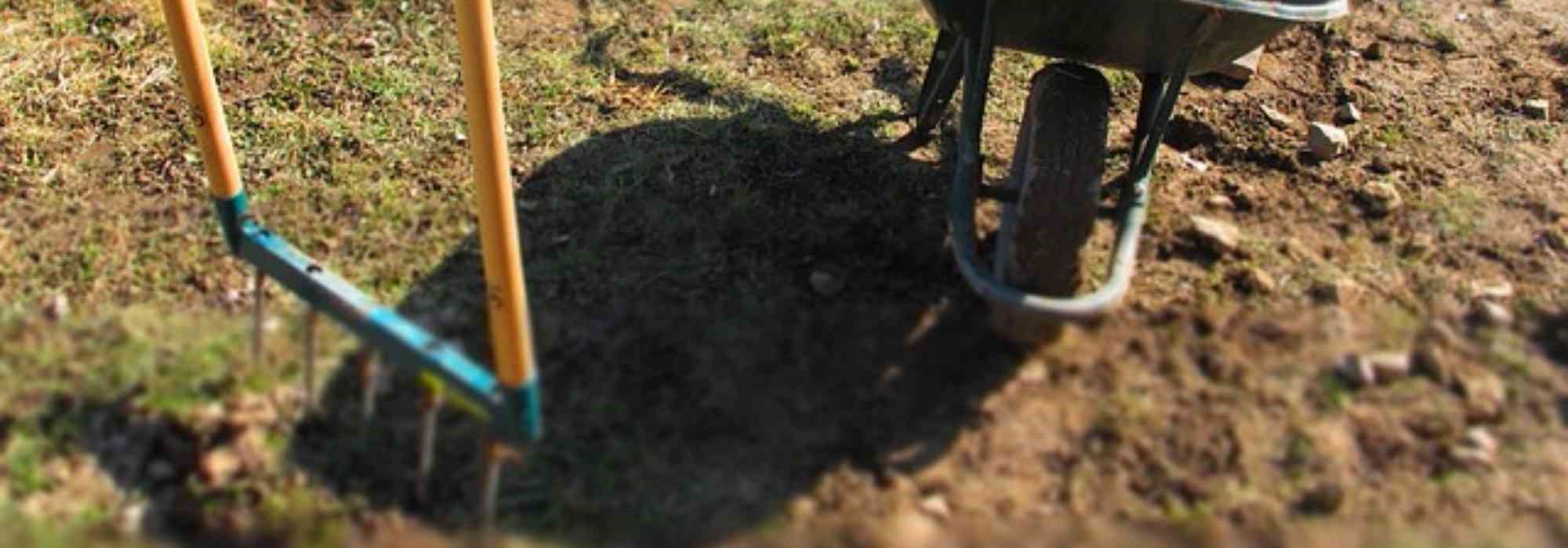
What is a biofork used for?
To take care of soil life
Contents
A biofork or aerofork is a type of wider digging fork with two wooden handles that is pulled towards oneself. These gardening tools allow for loosening and aerating the soil without the risk of injury. The most famous of this type of tool is the Grelinette, beloved by permaculturists and farmers who are mindful of their soil and the environment. Indeed, these tools, regardless of their names, offer numerous advantages: ease of use, effectiveness in preparing the ground before sowing or planting, and respect for the different layers of soil. Would a biofork be useful for your vegetable garden? The answer is likely “yes”, but to learn more, here is our advice sheet on the subject.
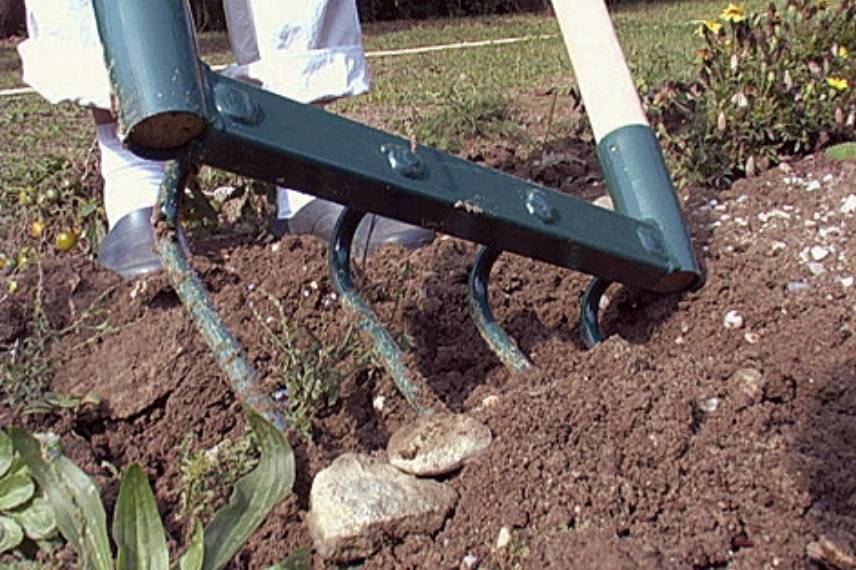
The grelinette with 4 tines (photo: Girardin, Wikimedia Commons)
What is a biofork?
We are well acquainted with the Grelinette, named after its inventor André Grelin. “Grelinette” is a registered trademark, which is why other tools of the same type must have different names: organic fork, aerofork, organic spade, organic cultivator, or ecological fork. The principle and design remain almost identical with a few minor details. Some of these tools are better suited for heavy and compact soils, while others, like the “campagnole“, are equipped with wheels. The principle remains the same.
An organic fork or aerofork is a type of fork-spade consisting of a steel base with three to five bevelled, curved, and relatively sharp tines, operated by two lateral wooden handles.
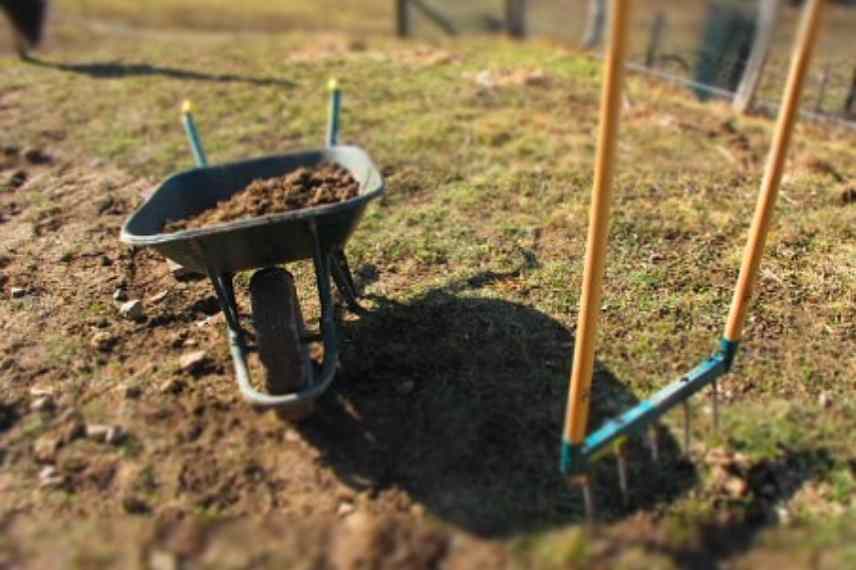
Read also
Garden tools: essentialsWhat are the uses of a broadfork in the garden?
- The biofork allows you to work the soil without turning it over, loosening the soil before sowing or planting. This tool is ideal for the vegetable garden, but also for preparing or loosening the soil in flower beds and borders;
- The aerofork or biocultivator is also used to effectively remove clumps of adventive plants from the soil, particularly couch grass for example;
- Finally, this tool is useful for harvesting certain root vegetables: carrots, parsnips, potatoes, Jerusalem artichokes… will be extracted from the soil with astonishing speed.
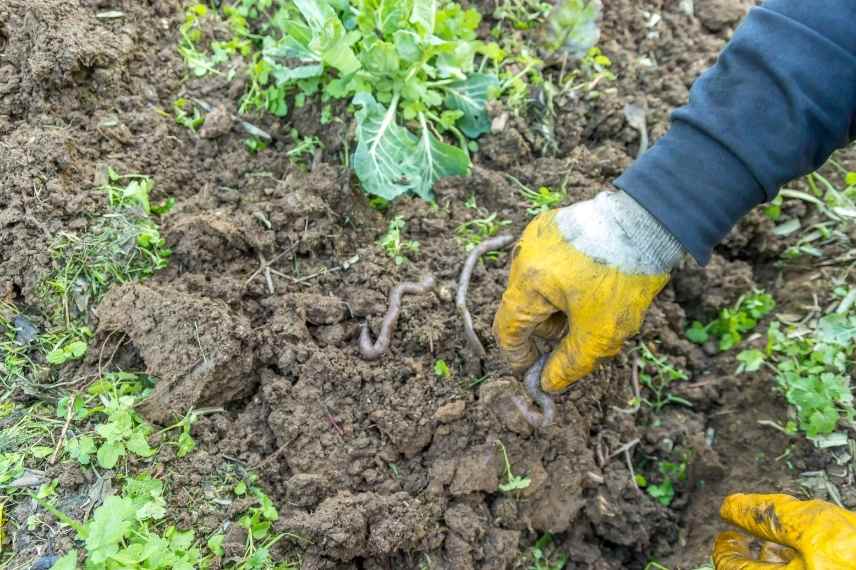
The biofork does not disturb soil life
Discover other Soil aerating and shaping forks
View all →Available in 1 sizes
Available in 1 sizes
Available in 1 sizes
Available in 1 sizes
Available in 1 sizes
Available in 1 sizes
Available in 1 sizes
How to use a broadfork?
A biofork is a relatively simple and intuitive tool. However, it still requires a bit of practice.
- The gardener pushes the tines vertically into the soil in front of them by stepping on the crossbar;
- Once the tines are inserted into the earth, they pull the two wooden handles towards their body: the soil is thus lifted across the width of the tool;
- They step back and swing the biofork from side to side to break up clumps;
- They then slide the tool back to remove the tines from the soil and repeat the process.
Why use a broadfork?
The benefits of this type of tool compared to traditional digging or using a tiller are numerous.
- The biofork loosens the soil without disturbing its different layers and preserving soil life. It is therefore a perfect tool for organic farming or nature-friendly gardening;
- The aerofork allows for deep aeration of the soil (depth of the tines), thus providing oxygen to the microorganisms in the lower layers of the soil;
- This type of tool engages the gardener’s arms rather than their lower back, significantly reducing fatigue and the risk of injury. Indeed, while the arms move back and forth when using a biofork, the back remains straight.
How to choose your organic fork?
As with any gardening tool, you need to choose quality. The “head” that carries the tines should be made of steel, and the handles should be made of wood (often ash) or, less commonly, steel as well.
The choice of the number of tines is important: 3, 4, or 5 tines. The fewer tines there are, the easier the tool is to use on heavy soils (the biofork will also be lighter), but the width of use will be more limited. It’s up to you to decide based on your soil and the intended use how many tines you will actually need. Remember that in light soils, you can opt for a 5-tine biofork, while for more compact soil, you should stick to a 3-tine tool.
If your garden area is small, you should choose a narrower aerofork, thus with fewer tines. If the gardener is a strong individual in their prime, a 5-tine biofork can be considered; otherwise, reduce the size of the tool.
→ At Promesse de Fleurs, we offer a whole range of quality bioforks.
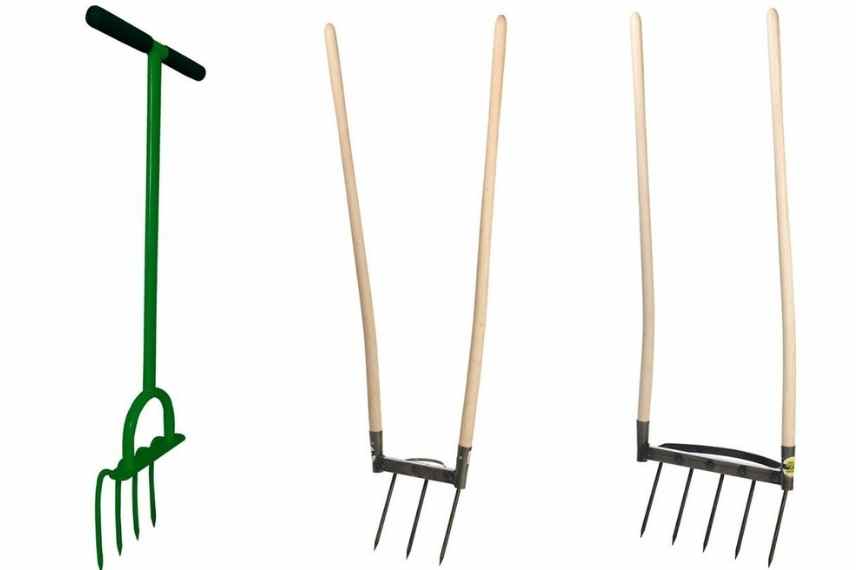 Bioforks have 3 to 5 tines
Bioforks have 3 to 5 tines
- Subscribe!
- Contents
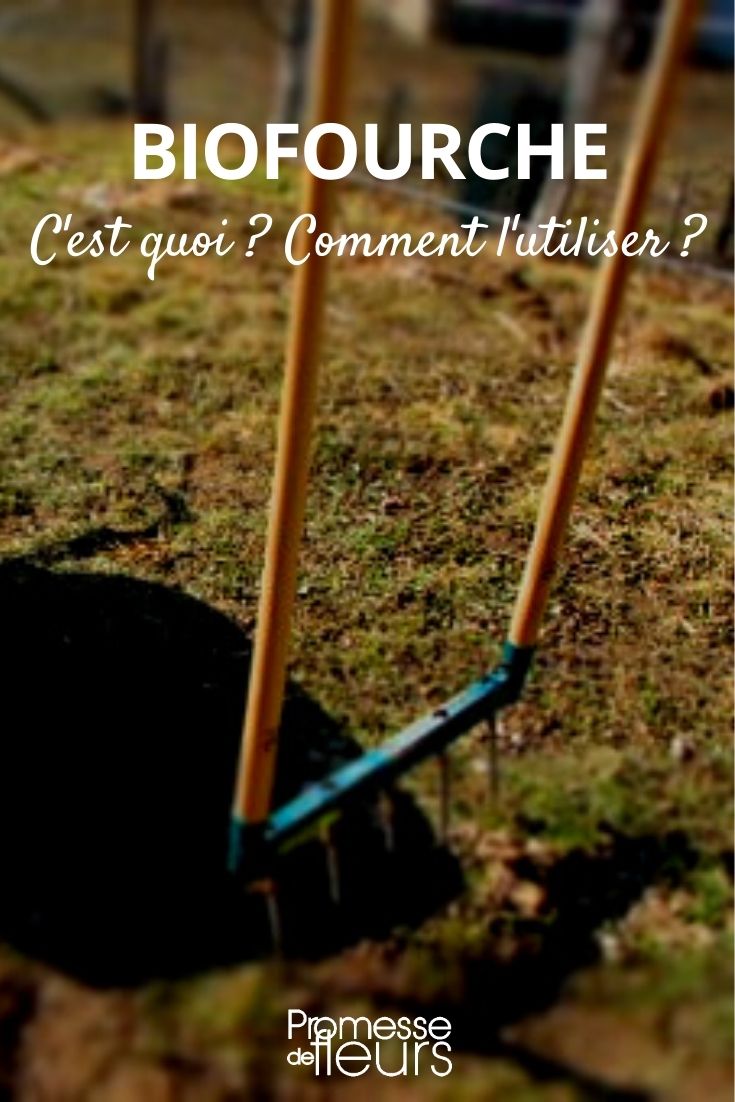































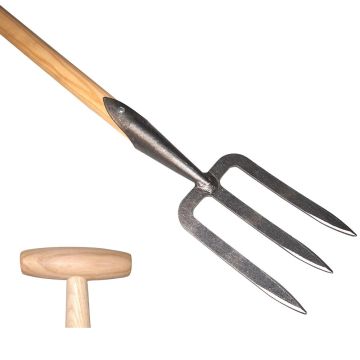
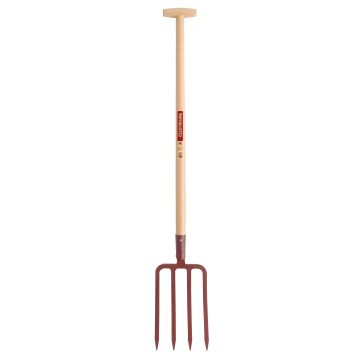
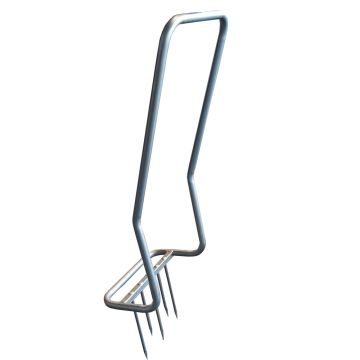
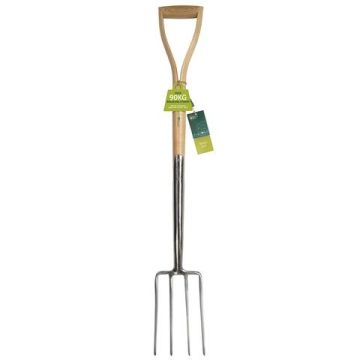
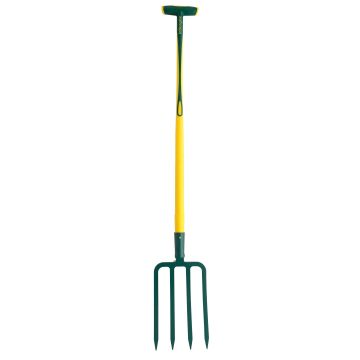
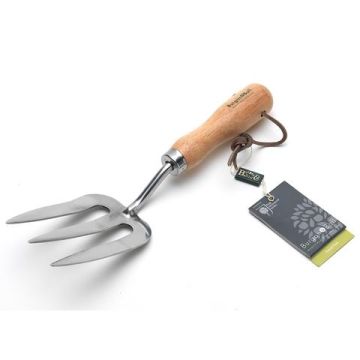




Comments